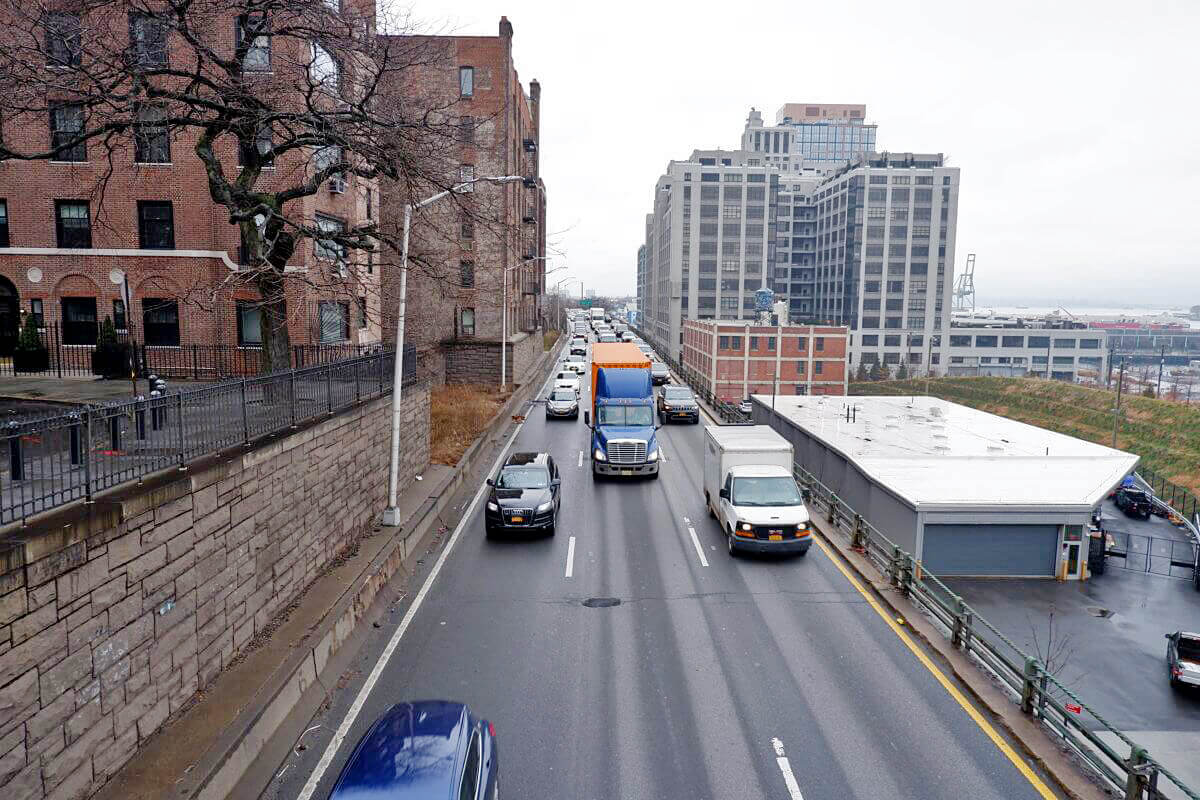Automatic enforcement of overweight trucks could come to the crumbling Brooklyn-Queens Expressway thanks to a state bill that’s poised to get approval this week.
The legislation sponsored by state Sen. Brian Kavanagh and Assemblymember Jo Anne Simon would allow the city’s Department of Transportation to install so-called weigh-in-motion sensors on the BQE to fine heavy haulers causing outsize damage to the deteriorating highway.
“This legislation is vital to extending the useful life of the BQE, and ensuring the safety of all drivers and passengers of vehicles that use this roadway,” said Kavanagh in a statement Wednesday after the bill was approved in both chambers Tuesday.
The lawmakers first put forth the law in early 2020 after a so-called expert panel appointed by Mayor Bill de Blasio to study the BQE found that overweight truck traffic was severely damaging the triple-cantilever section of the roadway wrapping around Brooklyn Heights, warning that the roadway could become unsafe as soon as 2026.
The report found of the 150,000 daily vehicles traversing the BQE daily pre-pandemic, trucks make up 15,000, or 10 percent, along the busy Robert Moses-era highway which carries a lot of freight traffic through Brooklyn and Queens.
Trucks are limited to a maximum load of 80,000 pounds as per the American Association of State Highway and Transportation Officials, but the panel found that 11.1 percent of trucks exceeded that threshold with some weighing as much as 170,000 — more than double the permitted weight!
While de Blasio promised to up police enforcement of the heavy vehicles after the report’s release, their existing tactics were impractical because they relied on cops eyeballing trucks for being overweight, taking them off the road, and weighing them with a stationary scale.
If the new bill is signed into law by Gov. Andrew Cuomo before the legislative session ends on June 10, it will allow the city’s DOT to set up the WIM sensors along Interstate-278 in Brooklyn. They can record both a vehicle’s overall or gross weight and the load on each individual axle, which is important because the same load can exert more pressure if less spread out across a shorter truck.
The sensors would send violations to trucks with weights 10 percent above the gross load or 20 percent above axle weight would be fined after a 90-day grace period.
The city agency installed the first such WIM technology on the Alexander Hamilton Bridge between the Bronx and Manhattan in 2014, and two more in Queens in 2016.
The bill’s language says that the new enforcement mechanism will help extend the triple cantilever’s lifespan, along with an “emergency repair initiative” DOT is due to unveil in the coming weeks.
This story first appeared on AMNY.com.


























